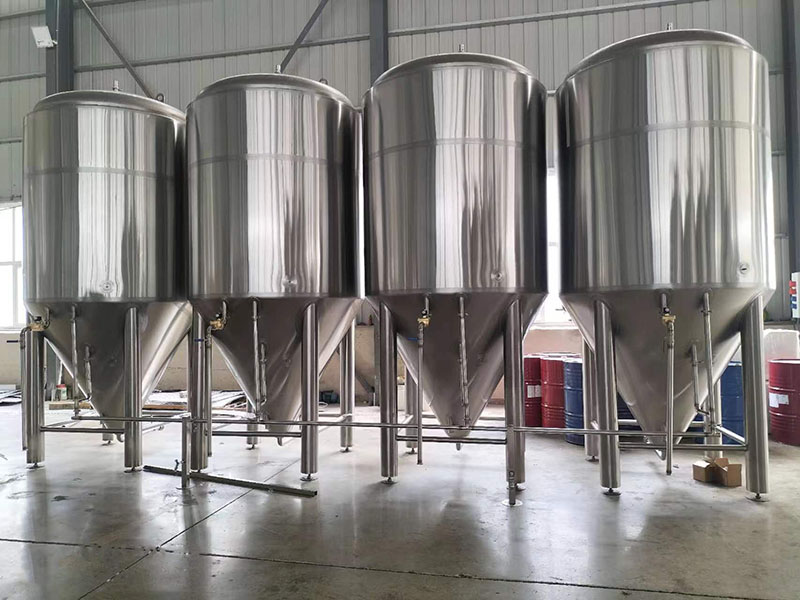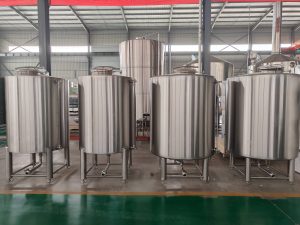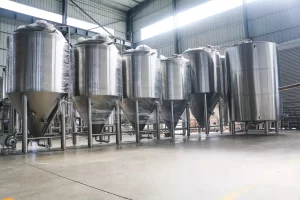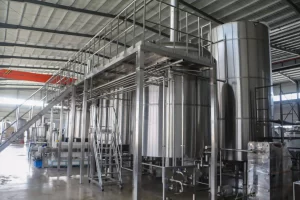How to Choose the Right Beer Fermentation Tank?

Choosing the right beer fermentation tank is essential for your brewery’s success. A quality fermentation tank ensures that your beer ferments properly. It affects taste, quality, and overall production efficiency. In this article, we’ll help you select the ideal tank for your brewery.
1. The Importance of Beer Fermentation Tank
Fermentation is a delicate process. Yeast converts sugars into alcohol under controlled conditions. A good fermentation tank creates an environment that supports this process. It can greatly impact the final flavor, clarity, and stability of your beer. The right tank also ensures your brewery operates efficiently.
2. Types of Beer Fermentation Tank
There are two main types of beer fermentation tanks:
- Conical Fermentation Tanks: These tanks have a conical bottom. This shape allows for yeast collection, making it easy to separate and reuse. These tanks are perfect for both small and large-scale brewing.
- Cylindrical Fermentation Tanks: These tanks are typically larger. They are ideal for lagering or fermenting larger beer volumes. They offer precise temperature control, which is important for some beer styles.
The tank you choose depends on the brewing methods and beer styles you use.
3. Capacity and Size
Tank size is one of the first factors to consider. The ideal tank size depends on your brewery’s production volume. Smaller breweries might opt for a 1-barrel tank. Larger breweries need tanks that can hold 100 barrels or more.
If you plan to scale your brewery, consider choosing a larger tank. This way, you’ll be prepared for future growth. You may also need multiple tanks for different stages, such as fermentation and conditioning.
4. Material and Durability
Stainless steel is the most common material for fermentation tanks. It is durable, resistant to corrosion, and easy to clean. Be sure to choose food-grade stainless steel (304 or 316) for the best quality.
Stainless steel tanks are easier to sanitize, reducing the risk of contamination. A smooth interior surface also helps prevent yeast buildup, which can spoil your beer.
5. Temperature Control Features
Temperature control is crucial during fermentation. Yeast requires a consistent temperature to ferment properly. A fermentation tank should have built-in cooling jackets or glycol lines to regulate temperature.
Precise temperature control allows you to produce beer with consistent flavors. Different beer styles, like lagers and ales, require different temperature ranges for fermentation.
6. Cleaning and Maintenance
Cleaning is vital to avoid contamination. Choose a fermentation tank that is easy to clean and maintain. Many tanks now come with CIP (clean-in-place) systems, making cleaning simple and effective.
Also, look for tanks with manways or access hatches. These features allow for thorough inspection and cleaning, ensuring that your tank stays sanitary.
7. Budget and Return on Investment
While cheaper tanks may seem attractive, investing in a high-quality fermentation tank is crucial. A good tank improves beer quality and production efficiency. Consider the overall cost, including installation, maintenance, and any future upgrades.
Make sure the tank you choose fits your budget and meets your brewery’s needs. In the long run, a high-quality fermentation tank can help you avoid costly mistakes and improve your brewing process.
8. Choosing a Reliable Supplier
Finally, choose a reliable supplier. A good supplier offers excellent customer support, warranties, and guidance. Make sure they understand the brewing industry and can help you select the right fermentation tank for your needs.
Look for suppliers who provide installation support and long-term maintenance assistance. This will ensure that your tank functions properly throughout its lifespan.
Conclusion
Selecting the right beer fermentation tank is essential for the success of your brewery. By understanding the different types of tanks, considering the tank size, material, and temperature control, and choosing a reliable supplier, you can make an informed decision. A good fermentation tank will improve beer quality, increase production efficiency, and support your brewery’s growth.
Key Takeaways:
- Choose between conical and cylindrical fermentation tanks based on your brewing style.
- Select the right tank size and material for your brewery’s needs.
- Ensure your tank has proper temperature control features.
- Prioritize easy maintenance and cleaning.
- Invest in a reliable supplier who provides long-term support.
By following these guidelines, you can choose the ideal beer fermentation tank for your brewery, ensuring consistent and high-quality beer production.
https://www.tcbrewbeer.com/en/80bbl-fermentation-tank/
https://www.tcbrewbeer.com/en/10000l-fermentation-tank/
https://www.tcbrewbeer.com/en/1000l-fermentation-tank/
https://www.tonsenbrewing.com/products-fermenting-system-for-beer-brew.html
Related recommendations
What is a Bright Tank and How It Improves Beer Quality?
441Learn how a bright tank improves beer clarity, carbonation, and stability, ensuring high-quality beer ready for packaging.
View detailsStarting a Brewery Business Plan: Your Ultimate Guide to Crafting Success
249Starting a brewery business plan
View detailsBrewing New Beginnings with Professional Brewing Equipment
511Elevate your brewing with professional brewing equipment. Discover innovative, sustainable solutions to craft exceptional beer in 2025.
View details
 Shandong Tonsenbrew Co., Ltd.
Shandong Tonsenbrew Co., Ltd.





HelloPlease log in